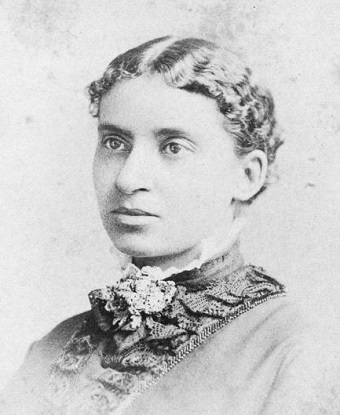Last updated: February 24, 2023
Person
Charlotte Forten Grimké

Courtesy of the the New York Public Library.
Charlotte Forten Grimké was a prominent educator and activist during the antebellum and Reconstruction eras.
Born free to activist parents in 1837, Charlotte Forten’s family was part of Philadelphia's elite Black community. Forten was educated by private tutors as her father did not want her to attend a public school. This was a privilege only wealthier families could afford. Later Forten moved to Salem, Massachusetts where she joined the Salem Female Anti-Slavery Society. In 1856, she entered Salem Normal School to receive instruction in teaching.
In the 1850s Forten became increasingly involved in the abolitionist movement. She published several poems in anti-slavery publications such as The Liberator and The Evangelist. She also called for Black women's participation in the abolitionist crusade. She joined circles of significant abolitionists such as William Lloyd Garrison and Lydia Maria Child.
In 1861, US military forces occupied the Sea Islands around Beaufort, South Carolina. After the region's wealthy white planters fled, formerly enslaved people worked together with government officials and northern missionaries to launch what became known as the Port Royal Experiment - a "rehearsal for Reconstruction." By the spring of 1862, teachers began to pour into the region to set up schools for formerly enslaved people. That fall, Charlotte Forten joined the staff of the Penn School, on St. Helena Island - the first Black teacher in Beaufort County. During Forten's tenure at Penn School, classes met at Brick Baptist Church, and in the 20th century, church members placed a small marker to Forten near the church entrance. During her time at Penn School, Forten kept detailed journals, as well as published an account in the Atlantic Monthly, "Life on the Sea Islands," in May and June of 1864. She taught at a number of schools on St Helena Island until the end of the Civil War.
After the war, Forten taught in Boston, MA and Charleston, SC. In 1872, she moved to Washington, DC, where she taught at a preparatory school later known as Paul Laurence Dunbar High School. One year later she became a clerk in the Treasury Department.
At 41 years old, she married the Reverend Francis J. Grimké, a former slave and minister of DC's Fifteenth Street Presbyterian Church. They had one child who died in infancy. From 1881 to 1886, the couple resided in Dupont Circle, Washington, DC.
In 1896, Forten helped found the National Association of Colored Women. Throughout the 1890s, she published poems about DC, including “At the Home of Frederick Douglass” and “The Corcoran Art Gallery.” Forten remained active in the civil rights movement until her death on July 23, 1914.
Sources:
Glasgow, Kristen Hillaire (2019). "Charlotte Forten: Coming of Age as a Radical Teenage Abolitionist, 1854-1856." [Dissertation]
Stevenson, Brenda, ed. The Journals of Charlotte Forten Grimké. New York: Oxford University Press, 1988.
Turkel, Stanley. Heroes of the American Reconstruction: Profiles of Sixteen Educators, Politicians and Activists. Jefferson, N.C.: McFarland and Company, Inc., 2005.
